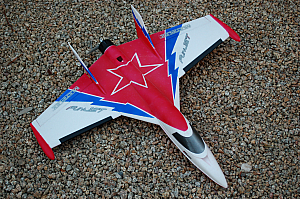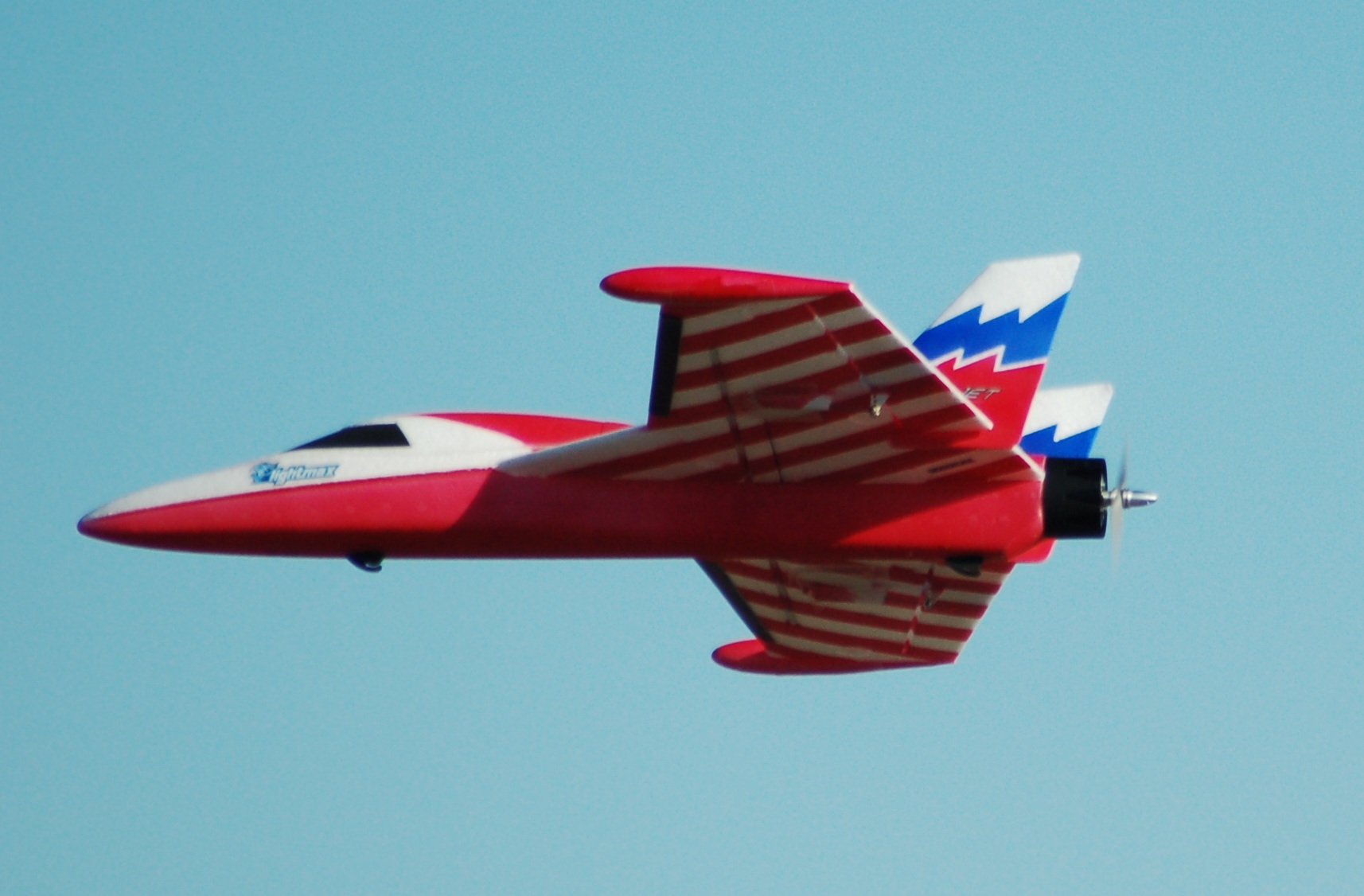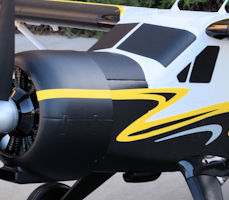
As reviewed here in RCPlaneviews, I've had and enjoyed the Mulitplex Twinjet until it's unfortunate demise. As the Funjets were going on clearance after the roll-out of the Funjet Ultra I picked one up for a good price. It sat a while in the building queue but at long last it was time to put the thing together.
The Funjet comes with just a couple of pieces in the smallish box and assembles using regular CA glue on the Mulitplex branded Elapor foam. The two wing tips attach to the fuselage and the turtle deck lays down over the rear portion of the fuselage opening on top. Two tail fins and the canopy are all that is left. The two servos mount in bays in the wing. I decided to use HS-81 servos from Hitec. They are protected by plastic covers that not only cover the servo but also the protruding servo arm. As with all the Multiplex kits I've built, the instructions are clear and easy to follow.
 |
 |
Control horns are the typical Multiplex variety that have tabs that glue into their perspective slots on the elevons using CA. Each is finished off with a mini connector to hold the pushrod coming from the servo. The motor mount consists of a plastic sleeve that fits over the circular tail opening. The motor is attached to a triangular firewall and screwed into the mount on both sides. The screw on the third side is used to adjust the angle of the firewall. Mine did fine with the zero recommended in the instructions. The scale is molded into the bottom of the mount. I'm using a 40amp ESC that is forward of the motor. The receive is just forward of that velcroed to the inside wall of the fuselage. The battery is in the front with room to move fore and aft to set the right CG.
After spending some time in the Funjet thread at RCGroups I decided to attach part of the turtle deck to the canopy so when removed I had greater access inside the fuselage. I strengthened the opening with a Popsicle stick brace going from left to right. I also added a piece of lite ply as a battery tray along the bottom of the fuselage. Many had commented that the speed and G forces stressed the battery and canopy so making sure it stayed in place was important. I sanded out a little foam for a Velcro cable tie to lay in and then mounted the lite ply tray on top of it so it fit flush. I attached it all with CA. I placed some Velcro on the tray after the first flight when I noticed the battery had shifted rearward. No wonder it flew tail heavy!
One of the things I like about foam models in general and Multiplex models in particular is being able to paint them how I like. The Funjet was no exception. I liked the red, white and blue scheme on a Mig-29 so set about modifying that for the Funjet. Except for one zig when I should have zagged, it came out pretty well. I didn’t even notice it until after flying it a couple of times. Oh well. Every project needs a mistake, I guess. The red stripes on the bottom make it very easy to tell up from down and give it a great look as it flies down the flight line. As I've discussed here before, I use craft paint from Michaels and a double action airbrush and lots of painters' tape!
 |
 |

As I mentioned, the first flight was marked by lot of up trim. When my partner and I got it down we adjusted the elevons and re-centered the trim on the DX 7. The instructions call for about 2mm of up elevon. That proved too much for this edition of the Funjet. One mm was enough and just a little trim was needed for the next flight. Some have reported a tendency to roll to the left when launching. I didn’t find that to be true for my set up. My little 2835 2700kV inrunner with a 5.5×4.5 APC prop produces a nice whine while delivering 325 watts of power using a 2200 3-cell lipo with 28 amps showing on my watt meter. With the battery the 14 ounce model topped out at 20.5 ounces. That equates to about 250 watts per pound.
After a couple of flights I decided I didn't like the sound of the motor on the firewall. The buzzing made it sound like things were vibrating too much. I ordered an aluminum mount from smallpartsCNC that arrived in just a couple of days. That helped a lot.
I haven't found any of the roll-on-takeoff problems mentioned by some on the various discussion boards. At half throttle my little Funjet flies straight away from me with a gentle toss at about 20 degrees up attitude. I can easily do it myself. I tend to enjoy flying on low rates. I have my Optic 6 set for about 70% on low. I'm using an Assan 2.4 GHz module and Assan 3 channel receiver from Hobby King. The 2.4GHz module fits nicely in my Optic 6 and has been providing a solid connection to the Funjet so far.
For me, the Funjet demands full attention. It can really scoot, even with the modest set-up I’m enjoying. What is really nice is how slow the Funjet can go. This allows me to take a breather from the high-speed flying and just tool around. It also allows a slow final and gentle touchdown. Clearly I should have built this one sooner.

















